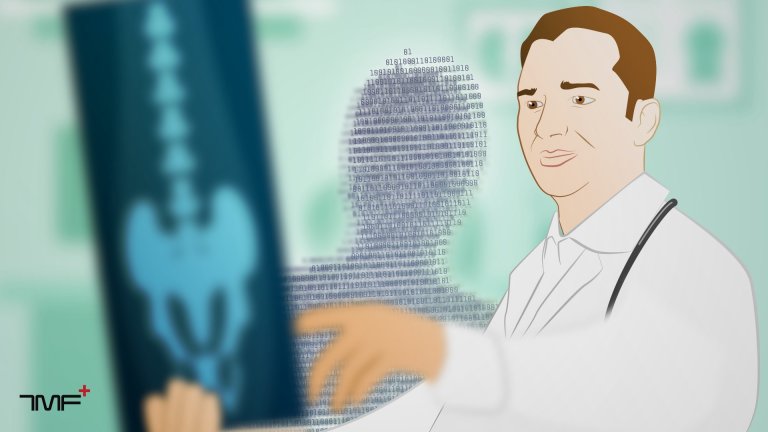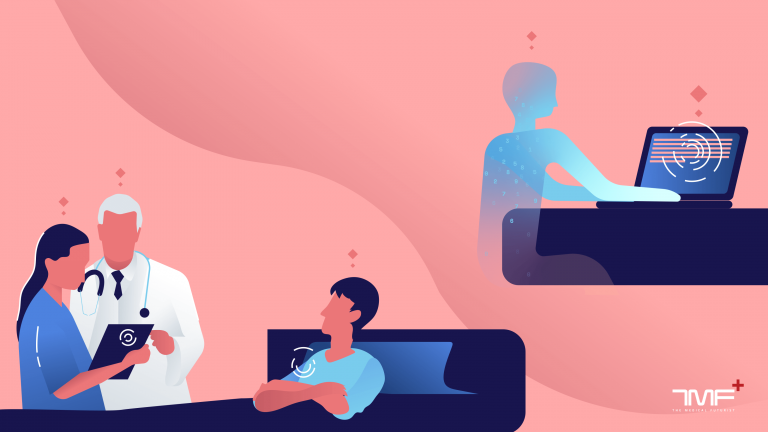
“Good morning! How may I help you today?” asks the virtual assistant as you boot your telemedicine app. After experiencing a sore throat and runny nose for a few days, you’ve decided to seek medical attention. You share your symptoms with the assistant who subsequently suggests a cause after scanning its database. “There’s an 83% chance that you are experiencing allergic symptoms,” replies the chatbot. “I will send you your prescription shortly, but if you are not satisfied or still feel unwell, please request for a human physician.”
Considering the likelihood of the diagnosis and the deductive prowess of the artificial intelligence, you decide to heed its advice and take the prescribed medicines. However, after two weeks, the symptoms persist and you decide to turn to an ENT specialist. After checking your CT scan, the latter determines that you have chronic sinusitis, which will require a surgical procedure.
Had it been diagnosed earlier, you might not even have needed surgery. So who is liable in this hypothetical scenario of the future? The algorithm that suggested allergies rather than an ENT examination, the doctor for not supervising the chatbot or the patient? Going further, what if an algorithm misses a cancerous lesion on an X-ray; or if a surgical robot accidentally damages a nerve bundle and partially paralyses the patient?
With AI and its potential to automate processes in medicine, such questions will become commonplace. While it’s healthy to ask oneself such questions, it can prove difficult to find proper answers and get the bigger picture of how automation will impact healthcare.
The spectrum of automation in medicine
In the February 2021 issue of The Batch, the newsletter from deeplearning.ai, the website’s founder, Andrew Ng, considered 5 levels of automation in medicine. Other experts have a similar classification system, albeit with different terminologies. The aim is nevertheless the same: to depict in a concise and easy-to-grasp way how the human-AI collaboration will unfold in the field of medicine in the years and even decades to come. Below is an infographic that helps in visualising the spectrum of automation in medicine:
“Today’s algorithms are good enough only for certain points on the spectrum in a given application,” writes Andrew Ng. “As an AI team gains experience and collects data, it might gradually move to higher levels of automation within ethical and legal boundaries.”
Although a lot has happened in the past few months, he still believes that while generative AI is exciting, it is still far from Artificial General Intelligence (AGI). This terminology comes from Nick Bostrom, author of the book Superintelligence. Bostrom introduced a high-level, long perspective, differentiating between Artificial Narrow (ANI), General (AGI) and Superintelligence (ASI), where AGI is the level of human intelligence.
While Bostrom’s concept has a long-lasting impact on how we think about AI, I believe that from a practical point of view, the 5-level concept of Ng helps us more to find ways to utilize AI in everyday medical practice.
To help you get a hold of the upcoming waves of automation in medicine, this article will expand on those 5 levels with current examples and imagined scenes that will become commonplace in the years to come.

1. Humans only: no AI involved
In level 1 of this spectrum, no AI, no advanced technology or digital data is involved. Imagine a doctor examining a patient. Humans are doing the work at this base level whether it’s manual work or inputting data to generate a process.
We don’t need to go far to imagine this stage as most medical procedures are still done manually. Whether it’s a surgeon performing a laparoscopy or a medical researcher gathering data for a meta-analysis, humans are at the forefront with no assistance from an AI.
2. Shadow mode: the physician teacher and the AI student
In medical schools, students learn the tricks of the trade by following a designated physician around the hospital. They take notes, ask questions and can perform some physical examinations under the physician’s supervision. This is commonly known as shadowing.
AI can undergo a similar “training” process with a so-called “shadow mode”. For example, while a physician makes a diagnosis based on an X-ray, a “trainee” AI follows the process without interfering with it. The algorithm thereby takes notes, checks the physician’s accuracy and logs everything that can support a future diagnostic decision made by the AI itself. This can be used to further develop AI technologies that will move them along the automation spectrum.

Already in 2020, researchers from Imperial College London proposed a framework that evaluates the accuracy and uncertainty of human clinicians against that of AI in shadow mode’s recommendations. This can help determine how efficient the AI “student” is and where it needs improvement to help it move to the next stage.
3. The AI assistant
At this stage of the automation spectrum, the AI system supports physicians in clinical decision-making via suggestions. For example, after scanning a database of chest CT scans, the AI considers the chest CT results of a patient being investigated and highlights suspicious signs. These signs are then further investigated by the physician.
An example is when AI is used as a tool for case triage. It supports a clinician reviewing images and scans. This enables radiologists or cardiologists to identify essential insights for prioritizing critical cases, to avoid potential errors in reading electronic health records (EHRs), and to establish more precise diagnoses.
The deep learning algorithm predicting Acute Kidney Injury (AKI) in patients up to 48 hours in advance also belongs here.
4. Partial automation
With partial automation, an AI system can come up with its own diagnosis; but if it’s not confident enough about it, the AI turns to physicians for help. Several companies are working on such solutions today.

The AI-based system from Behold.ai, red dot, classifies chest X-rays and localises its findings. It can even identify abnormal chest X-rays of COVID-19 patients. It can help in ‘instant triage’ to accelerate diagnosis and allocate resources accordingly.
Palo Alto-based Nines developed an AI-system that can identify potential cases of intracranial haemorrhage and mass effect from CT scans. It then flags those cases for radiologists to review.
The results of the first blinded, randomized clinical trial on AI case assessment in cardiology were published in April 2023, showing great results. Cardiologists agreed with the algorithm’s assessment more often than with sonographers’ assessments, doctors could not identify which output came from human colleagues and which from the AI, and the algorithm saved time both for the sonographers and cardiologists.
5. Full automation
As the name suggests, full automation processes are performed by an AI alone and do not involve human input. For example, a Level 5 system could analyse a mammogram on its own and request for subsequent testing without consulting a human physician for this decision. Similarly, some scientists speculate that some ophthalmological surgeries can be fully automated since some are already partially automated.
A fascinating example of level 5 automation was carried out by the John Hopkins University: a robot has performed laparoscopic surgery on the soft tissue of a pig without the guiding hand of a human. Not only has their STAR robot carried out operations on four animals, but it was also able to reconnect two ends of their intestines producing significantly better results than humans performing the same, extremely challenging surgical procedure.
Nevertheless, some researchers believe that reaching Level 5 automation in any medical setting is “unlikely to be safely achieved in the near term.” So we have to think of it as a long-term eventuality, but such levels of automation fuels fears of AI replacing physicians. However, it is more likely that such AI systems will excel at a specific task and healthcare professionals will increasingly interact with them. As such, it is more likely that those physicians who use and embrace AI will replace those that do not, rather than AI alone replacing physicians altogether.

Even though automation in medicine is only taking its first steps, it’s a spectrum that we are steadily progressing across. As such, it’s important that we think about the relevant possibilities lying ahead in medicine. We hope that this article helped you think along those lines and provided a clearer picture of automation in medicine.
Written by Dr. Bertalan Meskó & Dr. Pranavsingh Dhunnoo
|
At The Medical Futurist, we are building a community for making a bold vision about the future of healthcare reality today. If you’d like to support this mission, we invite you to join The Medical Futurist Patreon Community. A community of empowered patients, future-oriented healthcare professionals, concerned health policymakers, sensible health tech developers, and enthusiastic medical students. If there were ever a time to join us, it is now. Every contribution, however big or small, powers our research and sustains our future. Click here to support The Medical Futurist from as little as $3 – it only takes a minute. Thank you. |
The post The 5 Levels Of Automation In Medicine appeared first on The Medical Futurist.

